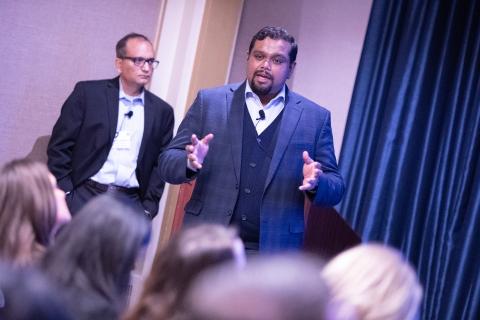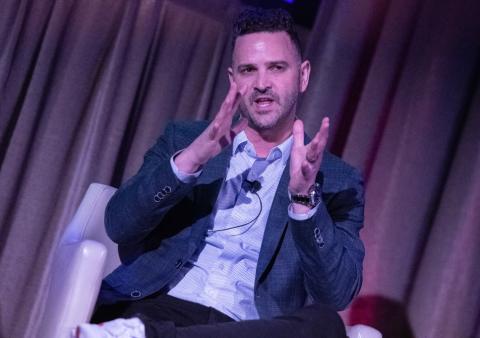Overhauling Your Data Strategy

Retailers know the only constant is change, particularly when it comes to ever-evolving technology, data strategy, and analytics. As customer tastes and retail channels grow, the way in which retailers capture, integrate, analyze, and apply data must keep up if they’re to drive tangible outcomes and ensure the highest level of business impact.
Retailers understand that data isn’t static, and an effective data strategy is one that includes iteration, flexibility, and overhauling, when necessary.
Retailers are Challenged, But Focused on Future Growth
Key findings from the “2023 Retail and Consumer Goods Analytics Study” show that both large and small retailers — despite sharing obstacles that include limited resources, insufficiently staffed analytic teams, and lagging analytic tools — remain focused on the potential growth that can result from leveraging a successful data strategy across an organization.
According to the study, 52% of retailers surveyed cited “lack of budget” as their top challenge in 2023, followed by “not having the right staff in place to lead analytics” (45%). This is reflected in the 74% of retailers who reported their organization has fewer than ten internal employees dedicated to business analytics.
In addition, when retailers were asked to compare their organization to industry-leading retailers (Walmart, Amazon, Kroger) 71% perceive their analytics tools to be lagging, while 68% reported their analytic strategy as needing improvement.
Despite these pain points in data strategy development, most retailers surveyed expect future investment in business intelligence to increase. Though 52% of respondents reported that less than 5% of their organizations’ total technology (IT) budget is currently spent on investments in analytics including hardware, software, services, and resources, 51% say they expect that spending to increase to 10% or more by 2026.
Where are retailers hoping to invest? The top three areas of focus for developing better data analysis in the coming year are inventory planning, pricing, and demand forecasting. In addition, 52% of retailers said they intend to make upgrades to data visualization and dashboards.

Build a Value-First Mindset
At the recent Analytics Unite: Summit for Retail and Consumer Goods brandsheld in Chicago, May 3-5, Deepak Jose, global head and senior director of ODDA analytics solutions, Mars Wrigley, spoke about his company’s decision at the start of its data journey to adopt a “value-first mindset” when making high-impact decisions.
“We always used to start with data,” he said. “We wanted to flip the pyramid.”
With a value-first mindset, an organization thinks first about the value they want to achieve, the decisions they must make to provide that value, then identifies the necessary data to make those decisions. This value-first model is indeed an inverse of the process many organizations use to make decisions, which often begins with data analysis followed by insights, actions, and finally, value creation.
At the same conference, Matt Weber, director of business insights and analytics for Kum & Go, detailed how his company is starting with the value proposition first — launching a healthy food initiative — and using analytics and market testing to support their decision-making and subsequent adjustments.

Kum & Go began its healthy initiative by conducting analysis to first determine which consumers would be interested in healthier convenience store food choices, then used first-party data from its loyalty program to discover if these consumers were already Kum & Go customers.
In 2021, based on results from A/B testing, the company began a brand refresh and store remodel to accommodate the launch of its made-to-order and healthy food products in 30 designated markets as well as a redesign of its app to accommodate the new made-to-order food sales. Additional analysis examined customer experiences and revealed that habits and mission-driving shopping were the greatest barriers to the trial of the new food program. Kum & Go shifted focus, creating friction to encourage customers to try the new program. This year, the company plans to optimize its kitchens and staffing and expand the program into new markets using data insights gleaned from its trial.
Connect the Cross-Functional Dots: Expanding Supply Chain Capabilities
Better analytics to leverage inventory planning is at the top of retailers’ wish lists, according to RIS.
Stripe International, Inc, a Japanese apparel and lifestyle brand company, is finding success doing exactly that. Utilizing a custom CDP (Customer Data Platform), the company creates personalized customer journeys in its retail and brand business and synched its supply-chain systems based on AI-generated customer behavior models.
“We used to outsource some aspects of our marketing and data analysis. Now that we can easily access and analyze customer data in-house, we are motivated to look at problems and say, ‘Let’s try this too.’ Also, our CDP helps us understand how our actions bring our customers closer. By increasing the accuracy of our work, I feel we have come closer to understanding our customers,” noted Shigeki Yamazaki, Advisor of the Digital Transformation Division of Stripe International Inc.
After testing its CDP with some initial pilot programs, Stripe built on its success to launch a company-wide digital overhaul. They used the CDP’s predictive modeling, for example, to tailor their supply chain so that the right products, were in the right stores, at the right time.
Prior to using a more sophisticated analytics system, Stripe allocated products among its stores according to each store’s budget and replenished them as needed from its distribution warehouses. Stores might also manually shift stock among themselves via inter-store transfer based on sales performance.
Now, the company receives continuously updated customer data in near-real-time from its CDP along with AI-driven predictive models, allowing Stripe to hyperlocalize its inventory and custom-stock stores with the right amount of inventory at the right time, based on that store’s customer buying patterns.
“Demand prediction and stock optimization prevented opportunity losses, maximized sales, and improved the bottom line. And another indirect benefit is that their work efficiency increased. The staff was able to spend more time attending to the customers, which contributed to a better customer experience. We received positive feedback from the store staff,” said Kazuki Enomoto, director of the digital transformation division.
Enomoto’s team has additionally used analytics insights to automate inter-store transfers, which initially translated to a labor cost savings of about $220,000 USD per year.

Aim to Create a Single Customer View
Customer data from multiple sources, data silos, and difficulty translating fragmented data into actionable insights, are challenges retailers face as they look to first-party data to identify customer behavior, create more targeted marketing and engagement strategies, or lower cost per lead.
Danone Indonesia is a food and beverage company committed to sustainable and equitable nutrition. Its Specialized Nutrition division oversees multiple brands including SGM Eksplor, SGM Bunda, Lactamil, Bebelac, and Nutrition Royal, which provide millions of customers with nutritional beverages around the world. Historically, though each brand captured its own customer data via in-store interaction, websites, SMS, and WhatsApp, the data were manually stored in spreadsheets and CSV files, resulting in disparate, isolated data sets.
Danone Indonesia chose a CDP to aggregate multiple data points and create a single customer view, which allows them to create more precise marketing strategies. Digital analytics manager Epsilon Analisa Akbar, says Danone Indonesia’s CDP, “makes it possible to collect several data sources into a single database and normalize that data across different variables, enriching customer profiles.”
The company now has timely insights into consumer behavior and can cost-effectively target precise customer segments with personalized messages and offers. Additionally, Danone Indonesia’s CDP culls data from Careline, the company’s customer support line. “Because we can connect our databases to Carline, we can drive meaningful conversations based on previous customer interactions and increase engagement,” says Epsilon. When customers call the support line, the company now has a holistic view of that customer including past purchases, website engagement, and interests, which translates to a deeper, more engaged customer experience.
Flexibility is Key to Data and Analytics Growth
Darrin Samaha, VP of marketing at Yesway, illustrated the importance of recognizing when an enterprise’s data strategy needs to grow when he discussed how his company overhauled the “Yesway Rewards Program” with a new loyalty partner at Analytics Unite 2023.
Yesway refocused its program to accommodate pandemic demands, acknowledging that many competitors accelerated their investment in tech, integrating touch points like online ordering, delivery, and better customer experiences. Samaha says Yesway has “flipped the script” and is focused on measuring loyalty program success through metrics like wallet share.
Though the landscape may be challenging as retailers look to expand their data strategies, flexibility and adaptability will be key for organizations to maximize the full potential of their analytic efforts.
For companies looking to mature in their data strategy, retail leaders suggest a small-scale focus, solving a specific problem, then building on that success.
As Mars Wrigley’s Deepak Jose notes, “Find one area you are inspired with and do it really well and you can transform your organization.”




